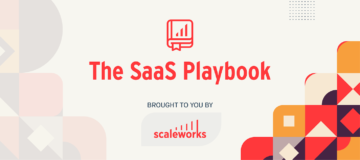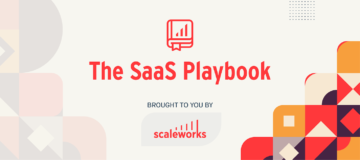In just 5 years, The Morning Brew has emerged as one of the GOAT newsletters. Their growth to stardom is in large part thanks to their referral marketing mastery – 30% of their 2.5m million subscribers came through the channel. We aren’t saying that a referral program will work quite as well for your B2B SaaS product (newsletters charge time, SaaS products charge money) but if it can work even just 1/10th as well, it could be worth testing…
🎯 We are big believers in flywheels over funnels because while funnels have an end state (paid customer), flywheels create a cycle and build momentum. The change to flywheels isn’t as drastic as you think – once a customer reaches the end of your funnel, add a couple steps like having them refer a friend, submit a testimonial, or sign up for your newsletter (all should increase stickiness). Redpoint Venture’s Tomasz Tunguz made an interesting point in favor of flywheels by looking at hiring practices. Once you bring someone on board, that isn’t your final interaction with them – you manage, cultivate, and foster that employee to improve their performance and attract future ones. Your customers should be treated no differently!
🏦 The management of your margins only becomes more important as you scale. We liked how the SaaS CFO addresses margin by spitting his P&L into two simple layers: gross profit and operating leverage. Gross profit is just your revenue less COGS, and should scale at a relatively similar rate as revenue. Operating leverage, on the other hand, should be closer to a fixed cost as you scale, growing at a much slower rate than revenues. Check out the equation below to calculate – the scale maximum for positive operating leverage is $1, meaning if you achieve $1 of operating leverage, you kept operating expenses flat year over year.
🤑 When it comes to customer success metrics (and really customer success in general) there are few more knowledgeable than Lincoln Murphy. He recently covered TTFV (Time to First Value), which is the time between the close of a sale and when that customer is onboarded. It’s a bit of an oddball in that it’s not a metric that businesses have complete control over – every customer has actions they must take to get up and running which you don’t manage. But by setting a goal (say 30 days) and working to get with your TTFV down to that number, you will will be able to measure exactly how much more quickly you can get users to their “aha” moment.
🔨 When people discuss why B2B SaaS startups fail, the blame typically falls on a bad product or overly crowded market. But there are obviously lots of other factors and reasons in play, one being that founders’ can become overly focused on product, at the expense of the total business. So before going heads down on scaling, you need a solid foundation in place, meaning: cultivating your value prop, fine-tuning your revenue model, and understanding how you fit within the broader ecosystem. The strength of your growth potential hinges on how well you understand the nuances of those elements and how you blend them together.
💻 Time for a history lesson on one of the hot topics of today: digitization. As Ray Wang breaks down in “Disrupting Digital Business,” the shift to a virtual world started years ago, and didn’t just impact how we interact with people. It changed the foundation of the business world. To survive in 2021 and beyond companies have to understand we’re no longer built on an economy of products and services, but one of experiences and outcomes, and success now hinges on how well we keep our promises to deliver those things. Wang urges us to build an intention-driven business, noting that old best practices and processes aren’t enough. The best companies are building systems to predict what will happen next and how customers’ attitudes are changing.
Source: https://thesaasplaybook.substack.com/p/-flywheels-over-funnels-how-to-measure
- 2021
- All
- Amazon
- B2B
- BEST
- best practices
- Bit
- board
- build
- Building
- business
- businesses
- cfo
- change
- charge
- closer
- Companies
- Couple
- Customer Success
- Customers
- digital
- digitization
- economy
- ecosystem
- expenses
- Experiences
- First
- fit
- future
- General
- good
- Growing
- Growth
- Hiring
- history
- How
- How To
- HTTPS
- Impact
- Increase
- interaction
- IT
- large
- Leverage
- Lincoln
- management
- Market
- Marketing
- measure
- Metrics
- million
- model
- Momentum
- money
- Newsletter
- Newsletters
- operating
- Other
- People
- performance
- Product
- Products
- Profit
- Program
- reasons
- Referral
- revenue
- running
- SaaS
- sale
- Scale
- scaling
- Services
- setting
- shift
- Simple
- So
- started
- Startups
- State
- success
- Systems
- Testing
- time
- Topics
- us
- users
- value
- Virtual
- virtual world
- within
- Work
- world
- worth
- year
- years






